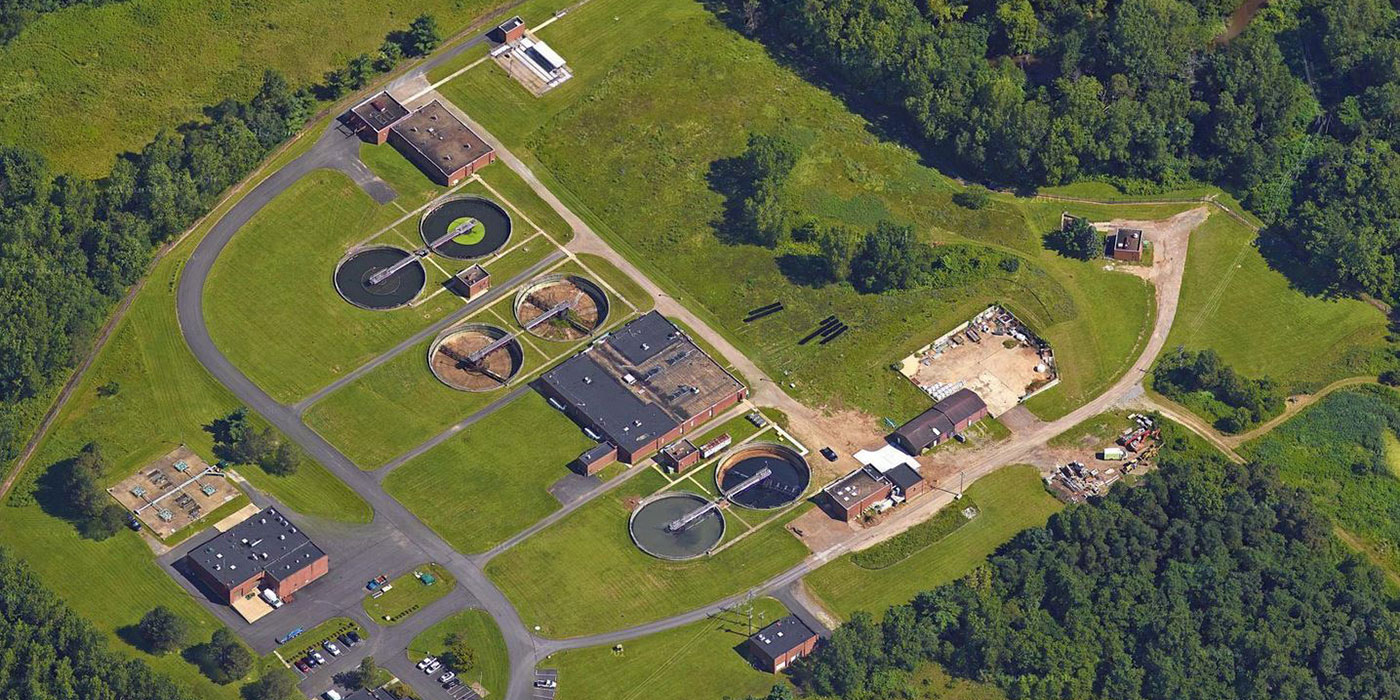Challenge
A DATED WASTEWATER TREATMENT PLANT WITH FAILING RBCS AND MULTIPLE NPDES VIOLATIONS NEEDED INNOVATIVE AND EFFECTIVE UPGRADES.
Services Involved
- Wastewater Treatment Plant
- Biological Nutrient Removal (BNR)
- Construction Cost Estimating
- Detailed Design
- Survey
- Utility Investigation
- Geotechnical Report
- Life-cycle Cost Analysis
- Permitting
- Sewage Collection
- Structural Design
Upper Tuscarawas Wastewater Treatment Plant
The Summit County Department of Sanitary Sewer Services (DSSS) operates and maintains the Upper Tuscarawas Wastewater Treatment Plant (WWTP) #36, a tertiary treatment facility located in Springfield Township.
Over the years, the Upper Tusc WWTP experienced up to 50 National Pollutant Discharge Elimination System (NPDES) permit violations per year, most of which were caused by an excess of ammonia and phosphorous. Because of these violations, DSSS had an urgent need to make changes to its existing system.
THE HISTORY OF THE ORIGINAL UPPER TUSC WWTP
Before getting into the solution, it’s important to understand the journey of the Upper Tusc WWTP. Constructed in the late 1970s, the original WWTP treated the wastewater using technology common for the time and consisted of the following:
- Fine screening
- Aerated grit removal
- Primary clarification
- Rotating biological contactors (RBCs)
- Secondary and chemical clarification
- Tertiary filtration prior to UV disinfection
The treated effluent was then discharged to the Tuscarawas River.
Over the years, RBCs have fallen out of favor due to excessive equipment failure and increasingly stricter NPDES permit limits. Prior to improvements, the WWTP’s 32 RBCs were almost 50 years old and had reached the end of useful service life. Of these RBCs, seven had failed.
It was clear a solution was needed to improve the Upper Tusc WWTP today and prepare it for the future. That’s when ms consultants came into the picture.
REVAMPING THE UPPER TUSC WWTP
DSSS had a vision for upgrading the Upper Tusc WWTP including:
- Using new biological process that provided biological nutrient removal (BNR)
- A solution that more easily meets existing NPDES limit for phosphorous and ammonia
- Ability to handle a flow of 5.0 MGD (instead of the WWTP’s rated capacity of 4.0 MGD) for future growth and flexibility
- Flexibility to meet potentially stricter NPDES permit limits
ms consultants evaluated several treatment configurations during preliminary design to determine which would provide the most cost-effective means of replacing the RBCs and providing BNR for the WWTP.
Final design consisted of a Modified University of Capetown (MUCT) biological treatment process in conjunction with a variation of the Virginia Initiative Plant (VIP) process comprised of new three-phase BNR tanks, secondary clarifiers, sludge pump stations, and a chemical/operations building. Additionally, ms designed a solid waste receiving station to accept the contents of the County’s sewer maintenance vehicles.
PROJECT HIGHLIGHTS
There are a number of successes in the Upper Tusc WWTP project, from innovative cost savings to vast environmental improvements. Some highlights include:
- Significant improvement to the local environment. This will have long-standing effects on the river basin and the local community that uses it for recreational purposes. Removal rates for both ammonia and phosphorus have increased to a level of 99%. Removal rates for these parameters far exceed the current permit requirements.
- Cost savings via repurposing an existing building. The RBC building was also repurposed as a storage building. The large footprint of over 18,000 square feet provides the County with a flexible, high-bay storage facility—essentially a new building for their use. This facility was repurposed at a cost under $500,000 which, if constructed new, would have easily cost over $4 million in today’s market—a potential cost savings of over $3.5 million.
- One of a kind, hybrid biological nutrient removal process. The Modified University of Cape Town (MUCT) process enhances biological phosphorus removal under optimal conditions, and the Virginia Initiative Plant (VIP) process provides greater ammonia removal efficiencies. Using these two processes together yields the greatest overall nutrient removal capability, and provides process flexibility for continuously changing influent characteristics.
- Less land disturbance. The bioreactors used provide secondary wastewater treatment. They are known throughout the industry for providing exceptional high-quality effluent in a very small footprint, thus disturbing less land.
- Beneficial water conservation. Sustainable water reclamation for use in the plant processes is a key theme in the facility’s overall plan. The effluent produced is treated to meet the industry reclaimed water standard and will be used in the plant. This beneficial reuse will conserve and reduce the use of potable water for plant purposes.

